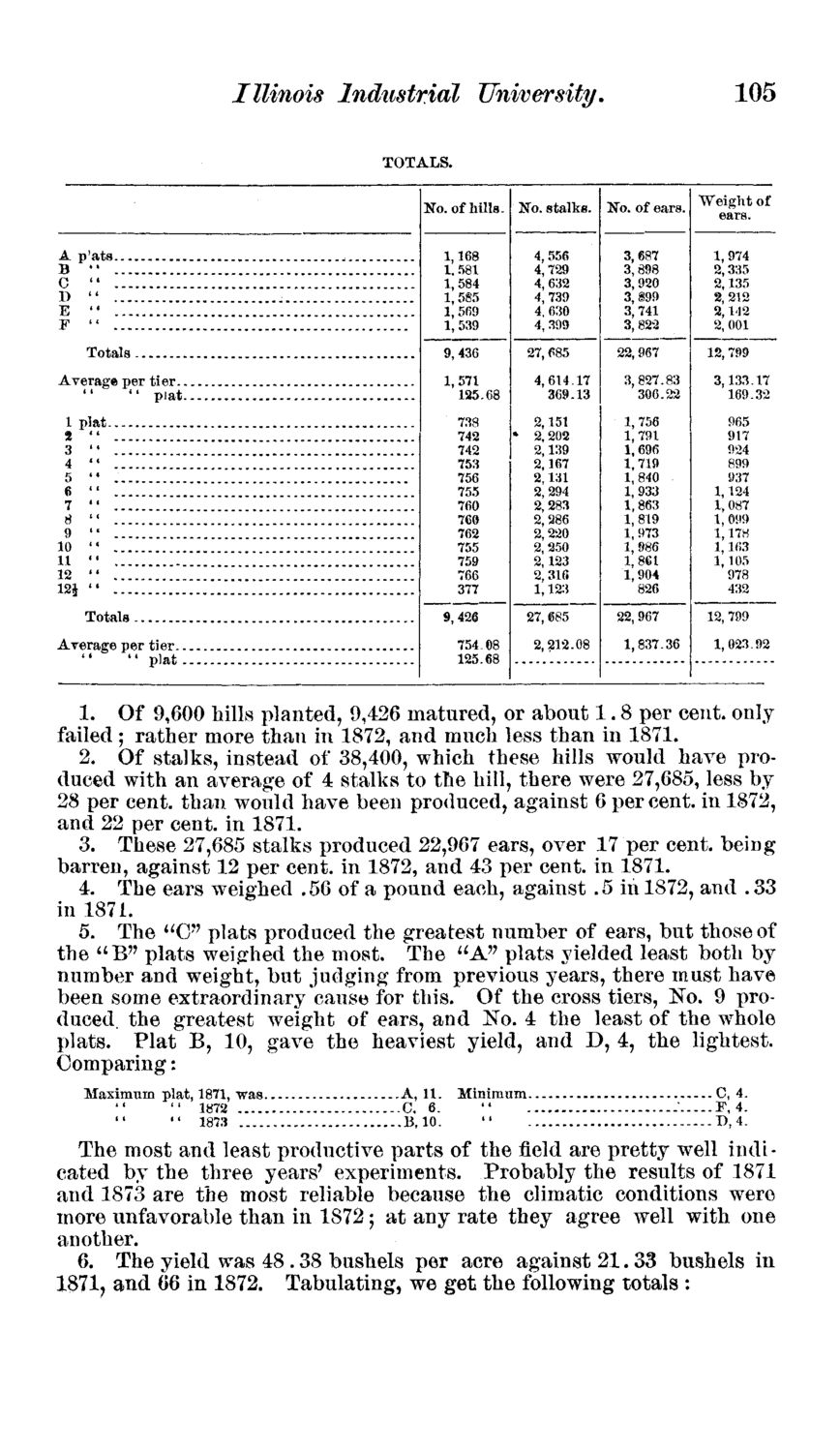| |
| |
Caption: Board of Trustees Minutes - 1874
This is a reduced-resolution page image for fast online browsing.

EXTRACTED TEXT FROM PAGE:
Illinois Industrial TOTALS. University. 105 N o . of h i l l s . No. stalks. N o . of e a r s . W e i g h t of ears. 3,687 3,898 3, 920 3, §99 3,741 3, 822 22,967 3,827.83 306.22 1,756 1,791 1,696 1,719 1,840 1,933 1,863 1, 819 1,973 1,986 1,861 1,904 826 22, 967 1,837.36 1,974 2, 335 2,135 2,212 2,142 2, 001 12, 799 3,133.17 169.32 965 917 924 899 937 1,124 1, 087 1,099 1,178 1,163 1,105 978 432 12, 799 1,023.92 A p'ats B •• C <4 D " E " F «' Totals Average per tier " *' piat 1 plat 2 •• 3 ,€ 4 *' 5 " 6 " 7 " 8 l« 9 " 10 *• 11 " 12 " 12J «• Totals Average per tier 1,168 1.581 1,584 1, 585 1, 569 1,539 9,436 1,571 125.68 738 742 742 753 756 755 760 760 762 755 759 766 377 9,426 754.08 125.68 * 4, 556 4,729 4,632 4,739 4, 630 4,399 27, 685 4,614.17 369.13 2,151 2,202 2,139 2,167 2,131 2,294 2,283 2, 286 2,220 2, 250 2,123 2, 316 1,123 27,685 2,212.08 1. Of 9,600 hills planted, 9,426 matured, or about 1.8 per cent, only failed; rather more than in 1872, and much less than in 1871. 2. Of stalks, instead of 38,400, which these hills would have produced with an average of 4 stalks to the hill, there were 27,685, less by 28 per cent, than would have been produced, against 6 percent, in 1872, and 22 per cent, in 1871. 3. These 27,685 stalks produced 22,967 ears, over 17 per cent, being barren, against 12 per cent, in 1872, and 43 per cent, in 1871. 4. The ears weighed .56 of a pound each, against .5 in 1872, and . 33 in 1871. 5. The UG" plats produced the greatest number of ears, but those of the " B " plats weighed the most. The "A" plats yielded least both by number and weight, but judging from previous years, there must have been some extraordinary cause for this. Of the cross tiers, No. 9 produced, the greatest weight of ears, and No. 4 the least of the whole plats. Plat B, 10, gave the heaviest yield, and D, 4, the lightest. Comparing: Maximum plat, 1871, was " 1872 • ' 1873 A, 11. Minimum C, 6. " 13,10. " • C, 4. F,4. D,4. The most and least productive parts of the field are pretty well indicated by the three years' experiments. Probably the results of 1871 and 1873 are the most reliable because the climatic conditions were more unfavorable than in 1872; at any rate they agree well with one another. 6. The yield was 48.38 bushels per acre against 21.33 bushels in 1871? and (yQ in 1872. Tabulating, we get the following totals :
| |